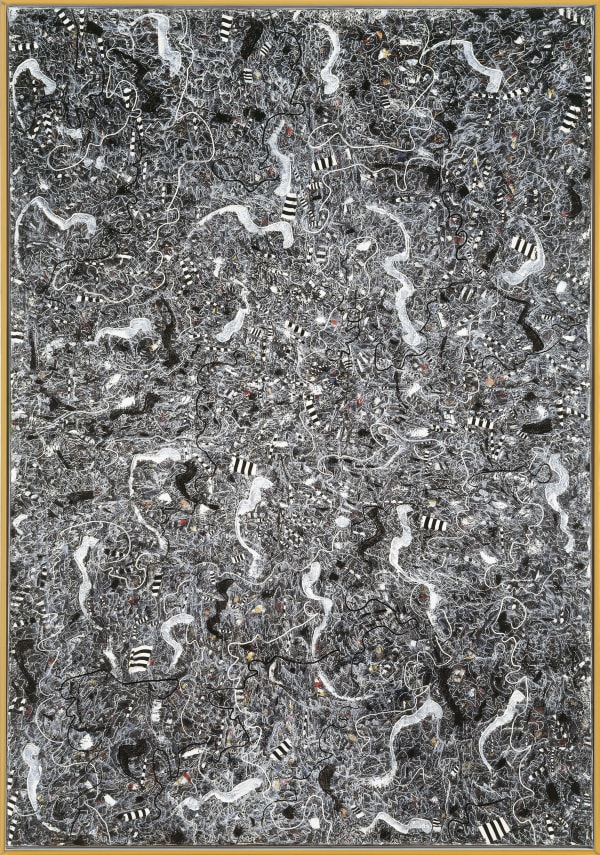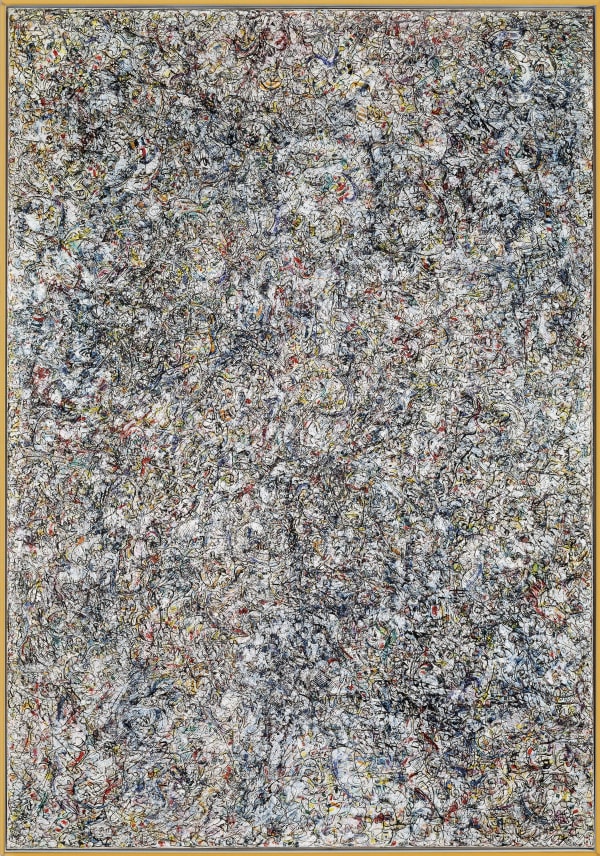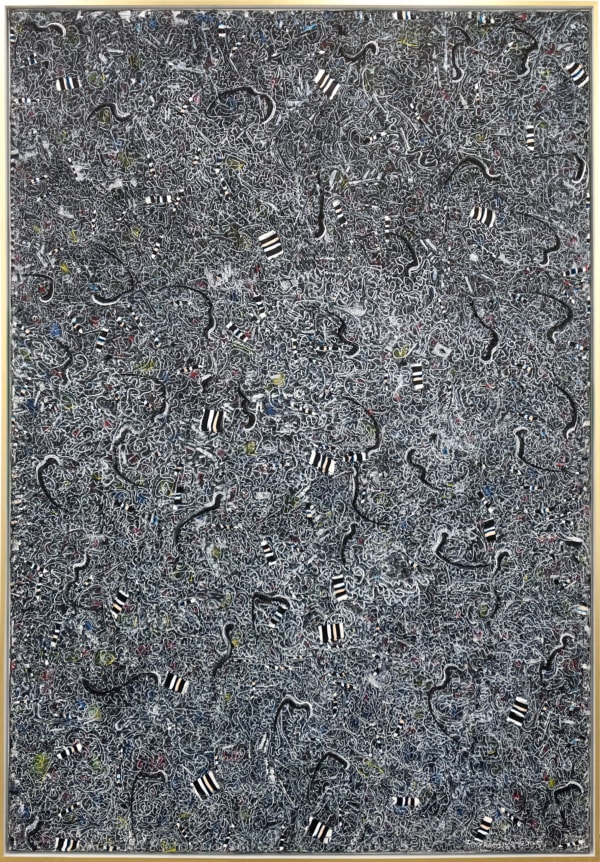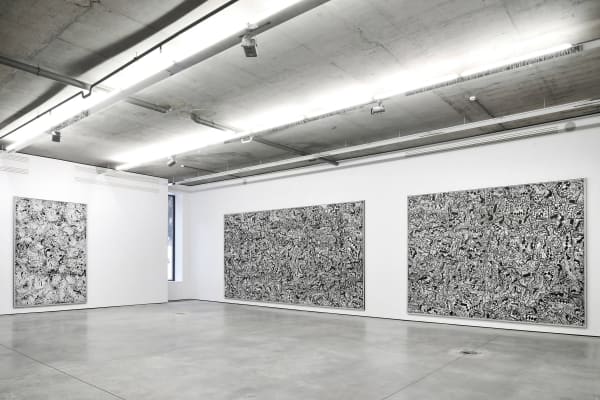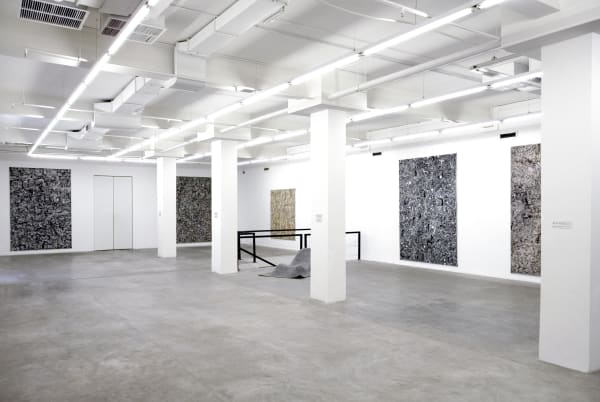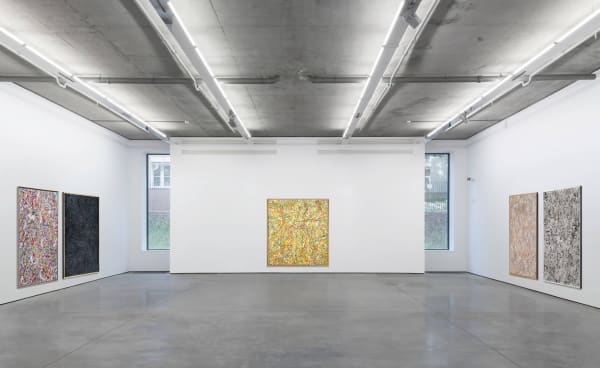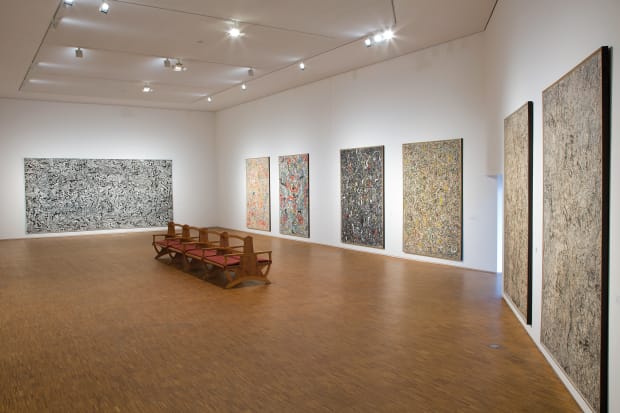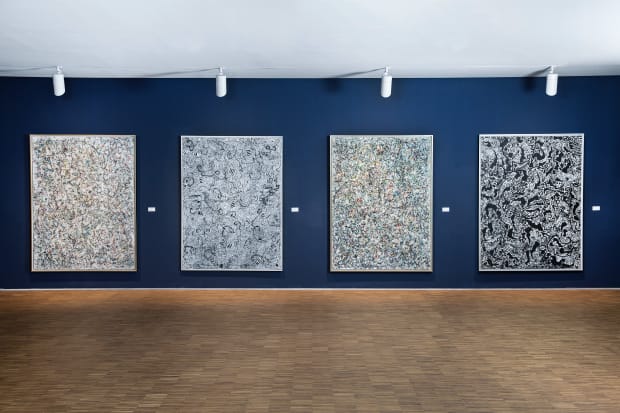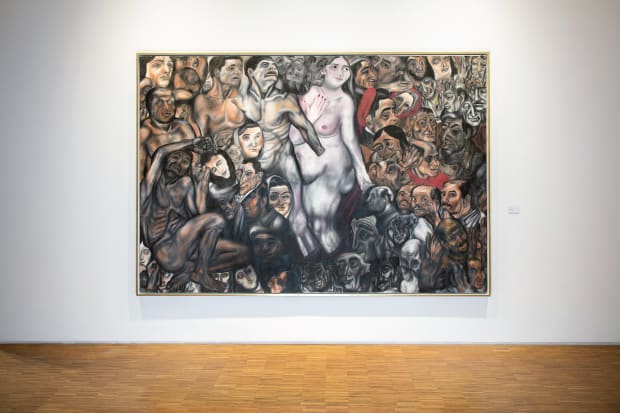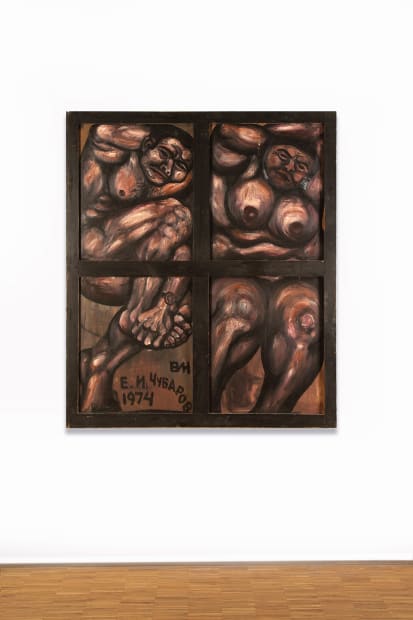Евгений Чубаров 1934, Башкортостан, СССР-2012, Московская область, Россия
-

-
Евгений Чубаров — одна из ключевых фигур отечественного искусства второй половины XX века. Живописец, график, скульптор, лауреат премии Фонда Джексона Поллока, он создал язык, в котором соединились наследие русского авангарда, экспрессионизма и философия тела и жеста.
> DOWNLOAD CV
Сформировавшись вне рамок официальных школ и модных направлений, Чубаров развивался параллельно с представителями советского неофициального искусства — Ильёй Кабаковым, Андреем Монастырским, Эриком Булатовым, — но сознательно противопоставил себя нарративности и иллюстративности. Он сосредоточился на внутренней структуре формы, на энергии линии, превращая живопись в особый акт мышления и духовного опыта.
«Искусство, лежащее на поверхности, способно ошибаться».
— Евгений ЧубаровВ 1970–80-е годы художник создаёт мощные графические композиции тушью, где человеческое тело — обнажённое, деформированное, почти скульптурное — превращается в пластический знак, отражающий неосознанные импульсы и внутренние ритмы. К концу десятилетия он полностью отказывается от фигуративности и обращается к абстракции, видя в ней не отрицание реальности, а путь к её глубинным закономерностям.
Абстракция для Чубарова — это поиск структурного равновесия, движение от видимого к сущностному. В своих размышлениях он не раз обращался к наследию Казимира Малевича:
«Я интуитивно ищу присущие “Чёрному квадрату” пропорции взаимоотношений между чёрным и белым, соотношения кривизны поверхностей и абсолютного белого, заслонения и внезапные прорывы белого сквозь трепет чёрной и цветной материи».
Художник армянского происхождения, Чубаров черпал вдохновение в искусстве средневековых реликвий, христианских икон и восточных рукописей. Этот пласт духовной традиции сочетался в его творчестве с живым опытом современности. Так рождалась уникальная иконография — слияние восточной каллиграфии, византийской символики и живописи ХХ века.
Чубаров превратил абстрактный жест в интеллектуальную структуру — со своей логикой, языком и драматургией. Его живопись сродни музыкальной импровизации: ритмичные мазки, визуальные акценты и паузы выстраиваются в симфонию света и материи.
Его поздние циклы — от строгих чёрно-белых до насыщенных цветных абстракций — представляют собой динамические структуры, наполненные внутренним ритмом и вибрацией. Принимая непредсказуемость абстракции, он воспринимает холст как музыкальную партитуру, наполняя его ритмом, визуальной мерностью и тональными контрастами. Импульсивные мазки и цветовые каскады подчинены тонкой дисциплине композиции: каждая линия становится не жестом, а мыслью, каждым цветом управляет внутренняя логика. Так рождается то, что сам художник называл чистой или интеллектуальной абстракцией.
«В его картинах нет традиционного центра. Композиция рассыпана по поверхности холста. Работы сознательно создаются в противовес академическим канонам. Случайная структура разрушает внутреннее равновесие цвета, формы и мазка, образуя “нереляционное искусство”. В этой безграничнойсвободе ничего не взвешено — и именно здесь Чубаров проявляет особое мастерство».
— д-р Тайфун Белгин, Музей Остхаус Хаген (Германия)
В начале 1990-х годов Чубаров переехал в Берлин, а затем в Нью-Йорк, где его стиль окончательно сформировался. В эти годы он участвовал в выставках наряду с Фрэнком Стеллой, Солом Левиттом, Питером Хелли и Дэмиеном Хёрстом. Его работы экспонировались в Государственной Третьяковской галерее (Москва), Государственном музее изобразительных искусств им. А. С. Пушкина (Москва), Государственном Русском музее (Санкт-Петербург), Московском музее современного искусства (ММОМА), Музее Университета Ратгерс (США), Музее Остхаус Хаген (Германия).
Наследие Евгения Чубарова — сотни живописных полотен, тысячи графических работ и скульптур – хранятся во многих частных собраниях по всему миру. Для сохранения и исследования его творчества создан Фонд Евгения Чубарова (The Chubarov Foundation), который занимается каталогизацией, публикацией и популяризацией его наследия в сотрудничестве с ведущими музеями и институциями.
-
Работы
-
-
Выставки
-

Tatintsian Gallery Selected
Групповая выставка, Дубай 14 Ноября - 30 Декабря 2022Tatintsian Selected project opens alongside two Dubai landmark events in fall 2022 – Alserkal Art Week and Dubai Design Week.Узнать больше >
Gallery showroom will spotlight selected works by such contemporary masters as Ron Arad, George Condo, Mat Collishaw, Evgeny Chubarov, Peter Halley, John Miller and Jenny Holzer. -

Евгений Чубаров
Персональная выставка 3 Апреля - 10 Ноября 2015Узнать больше > -

Евгений Чубаров
Персональная выставка 17 Мая - 20 Июня 2007Узнать больше > -

Создай свой музей
Групповая выставка 24 Января - 1 Марта 2007Узнать больше >
-
-
Публикации
-
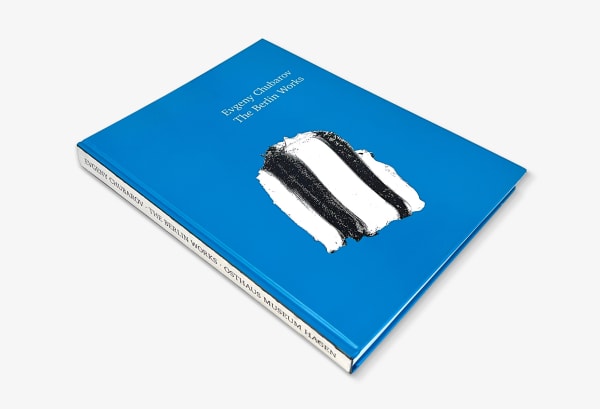
Евгений Чубаров. Музей Остхаус Хаген
2016Твёрдая обложка, 200 pagesУзнать больше >
Publisher: Галерея Гари Татинцяна
ISBN: 978-3-946688-05-1
Dimensions: 210×280 mm -
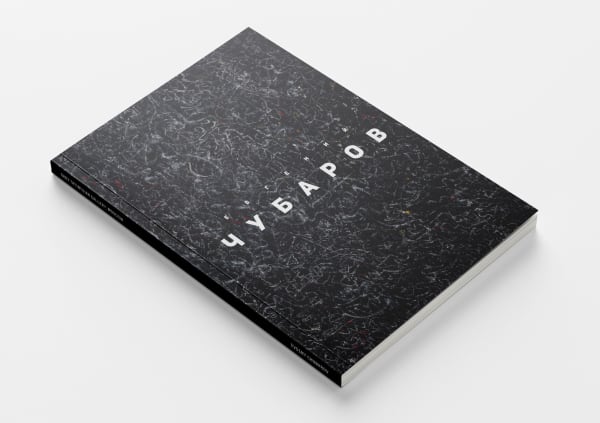
Evgeny Chubarov
2015Paperback, 208 pagesУзнать больше >
Publisher: Gary Tatintsian Gallery
ISBN: 978-5-9906881-2-4
Dimensions: 220x290 mm -
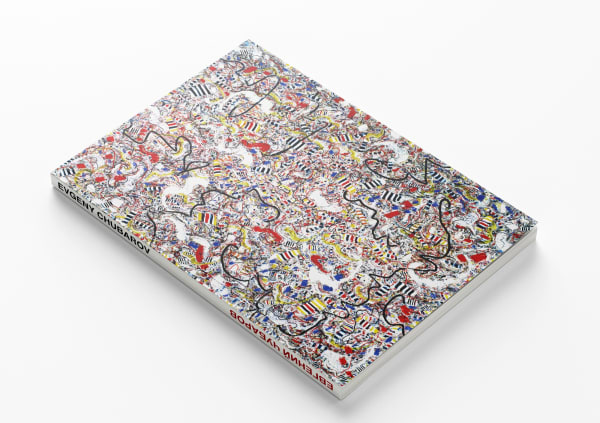
Evgeny Chubarov
2004Hardcover, 164 pagesУзнать больше >
Publisher: Palace Edition
ISBN: 3-935298-79-X
Dimensions: 23,5 x 31,7 cm
-
-
Viewing Rooms
-
-
-
Chubarov’s paintings of that time are characterized by strong, often aggressive, multi-figure compositions, with the exception of scenes of rural life that he only painted from time to time. Very often naked bodies can be found facing each other in multi-figure scenes in such a way that they seem to compete for the space on the canvas. These works are so imbued with the spirit of struggle that sometimes there is a sense of a heated conflict between the sexes. That said, this violent convergence is also marked by an erotic element. This environment is defined not only by nudity, but also by the aggressive and strong-willed poses of the figures. This, in the words of Hans Hofmann, is a good “push” and “pull” relationship: an action of force and its subsequent expression determine the mood of these paintings. All of this is a game of bodies that is similarly reflected in the ink works of the last period.
Two naked figures, full of strength, are embraced in the very limited space of the painting. Chubarov divided the canvas into four parts with a cross: he placed a man to the left and a woman to the right. In an exercise of strength, the naked man is trying to raise his leg, which bears against the boundary of the space. The nude woman with huge breasts and powerful thighs is looking at us, the audience, with her arms crossed behind her head and a surly expression on her face, as if she wants to ask what the purpose of all this torture is. In this symbolic painting, the man and the woman in the crosshairs of the canvas are separated from each other, as if they are in different prison cells.
The 1976 piece “Untitled”, on the other hand, differs in its filigree of the highest form. These works unquestionably pay tribute to the outstanding symbolist and teacher of analytical art, Pavel Filonov, who was one of the pillars of the avant-garde. On Filonov’s canvases, regardless of whether he was depicting peasants, priests or nobles, usually there would be many figures all gathered in a very narrow space, as if the characters materialized out of nature and suddenly gained shape. In contrast to Filonov’s works, Chubarov’s paintings are clearer in their macrostructure. He prefers the golden ratio, which is determined by the naked figure of a woman shifted from the center of the canvas to the right. This mise-en-scène begins on the left with an almost stooping figure, reminiscent of Christ after His Descent from the Cross. Those depicted on the right side of the figure are definitely bigger in size than those depicted on the left of the figure, who look like masks. It is clear that among all the characters, there are two friends meeting, as their facial features are much more expressive than the others’. Both the naked main characters in the center of the canvas are looking up, as if they are waiting for some news. Is the nude woman in the center of the picture the famous heroine Joan of Arc?
In Chubarov’s final years, his works done in ink do not ask such questions. He did not address specific characters, only anonymous figures involved in wild merrymaking. Such merrymaking is characterized not only by erotica, but also by blatant sexual acts. Chubarov accentuates individual body parts, both male and female, that are involved in sexual games. In these provocative paintings, we find primal forms of human life. Civilization is turned off. We are taken back to prehistoric times in a time machine, where we become observers in a world that never ceases to amaze. Do these pictures reflect the aspirations of the artist? In his final years, did he dream, like Picasso, of a turbulent world surrounded by a multitude of men and women? Are these love games, which always have an inherently violent nature, a reflection of our civilization? Do we not want to talk about this? Does it destroy our intimate world? In the final years of Picasso’s work, there were more and more violent scenes. His series dedicated to artists and art models are the best evidence of his resistance to advancing infirmity. Chubarov’s works in ink really get to the point. They demonstrate a rampage, a drama that overcomes the dominance of the world, in a way that may seem surrealistic. Nevertheless, we find a lot of truth in these works, when we try to pass them off as our own fantasies.
These works also tend to transform. In some cases, these wild multi-figure scenes turn into a world of brushstrokes, which seem to absorb their characters. The works in ink are not representational and undoubtedly refer to the major works of the Berlin period, albeit implicitly. They are characterized by pictorial impetus, while the monumental paintings are dictated by the power of lines.
The first encounter with Evgeny Chubarov’s monumental, large-format (3 × 2 m and larger) canvases shows that, figuratively speaking, we are dealing with symphonic works. The expressive power of these works is huge and the effect they have on a space and on the audience is very impressive. Their size suggests that these works are part of a larger context and are more likely intended to be in a museum rather than a private collection.
The word “symphonic” here implies a comparison to smaller-scale chamber works like the multi-figure ink compositions of the final years. These large canvases present an integrity that can be expressed through an understanding of the sublime. The sublime (refined) is traditionally associated with something large and grand. In 1757, in his philosophical studies, Edmund Burke introduced the concept of the sublime to the philosophical aesthetics of modern times that Aristotle had defined in his theory of tragedy. The sublime goes beyond beauty and refers to a feeling of the unattainable. The immense, as if unperceivable to us or attainable only superficially, is one of the defining characteristics of the refined.
Chubarov’s works are associated with this idea of the refined, in the sense of the invisible or indecipherable. The observer truly wonders to what extent he/she is able to grasp the essence of these works. An important formal aspect is dictated by the technique of a composition. There is no traditional center in these paintings, which is to say, that they are created in defiance of academic canons. As a rule, the composition of a work (including abstractionist works) is dictated by academic canons, against which elements of color and form are weighed, or brought into accordance with a specific ratio. In relational art, as it is sometimes called, ratios are always observed, which also involve the center of the picture.
In contrast to this, Chubarov’s canvases of the Berlin period represent “non-relational art”. This means that the composition is randomly scattered across the canvas. This arbitrary composition eliminates the internal balance of colors, shapes, and strokes. Nothing is weighed in this limitless freedom. This is where Chubarov performs masterfully.
We are familiar with the principle of a composition scattered all over the canvas thanks to Jackson Pollock. But, while Pollock’s paintings arose as a fragment of a larger context (his canvases were cut from a larger canvas lying on the floor), Chubarov always painted his works in a set scale, for example 3 × 2 meters. The artist turned to a specific format and worked within this format with all the freedom of the painting process. As far as we know, Chubarov’s work was not done on the floor. He leaned his canvases against the wall or hung them up to paint on them. We also do not see him using splashing or dripping paint techniques, as Pollock preferred.
Chubarov’s paintings are dominated by lines. His works are covered in several layers of lineal ornamentation, while both micro- and macrostructures interpenetrate in the painting process. The work on a piece is carried out in stages, rather than all at once. It is clear that Chubarov had a brilliant inner guiding force in turning his ideas into works of art. Sometimes rounded lines extend from one edge of the painting to the other, that are then replaced by stronger thicker patterns of lines that wrap around the first layer. Then thin rectangular, square or triangular colorful and black blotches are added, arranged in a row, as seen in the images of fragments of paintings included in this catalog. We can also see traces of a squeegee, which was often used to apply a few final layers of paint on top of the previous layers of lineal ornamentation.
The technique of applying paint with a squeegee is observed both in black-and-white and color paintings. Colorful shapes, in red, green, yellow, black, or white paint, are applied to the lower thin layers of black brushstrokes, in such a way that they resemble handkerchiefs waving in the wind, although that is not what is depicted. The color paintings are characterized by a lightness that differs them from most of the black-and-white ones.
Chubarov, as we know, subjected the works of the Berlin period to a game of improvisation. He deliberately chose this style, as he had mastered it. He had no intention of transferring his older works to larger canvases. That seemed too banal to him and offensive to his level of expertise. Chubarov understood improvisation in a musical sense. He was fascinated by unpredictability.
In regard to musical improvisation, musicians Theo Jörgensmann and Rolf-Dieter Weyer wrote, “Improvisation in music means doing unpredictable things, bringing inner feelings to light. It means feeling, mentally analyzing, and acting. Inspiration, intuition, and constructive imagination form an alliance with each other. Thus, improvised music is a firsthand archetypal musical experience. The improvising artist creates his music without detours, directly in its uncut form. He only has himself and his instruments at his disposal, but the artistic quality of his improvisation is always linked to his artistic sensitivity, his personality, his creativity, and his professional musical abilities and skill.”
The words of these two musicians give a broad definition of the concept of musical improvisation, which is fully applicable to Chubarov. This artist found himself in his painting. In his own unique way, he created these marvelous incomparable works. The dialogue between his inner “I” and his canvas, as far as we can tell, was direct and delicate. It was the greatest happiness for him. All of this, of course, would have been impossible if the artistic matter was imperfect.
These paintings of Evengy Chubarov are works that arose as a result of an impulse of genius in the years, after 1989, when he became acquainted with Belin and Western Europe and intensively polemicized with the medium of modern art. His contribution to the world of art was that, in the era of postmodernism, he left us a legacy of works of the greatest originality.
Dr. Tayfun Belgin, Director Osthaus Museum Hagen





